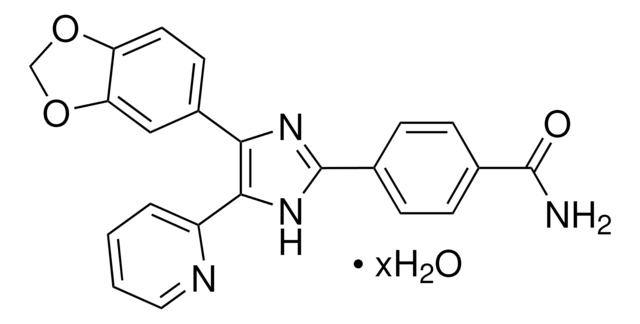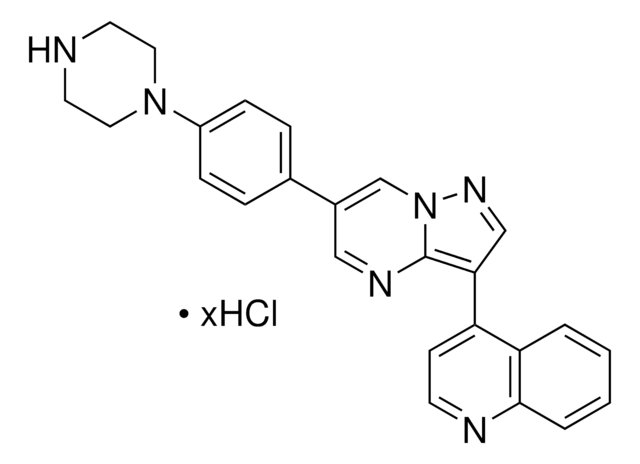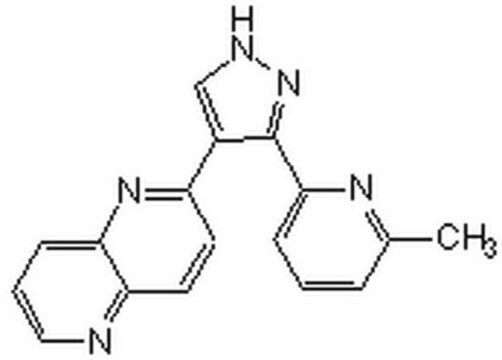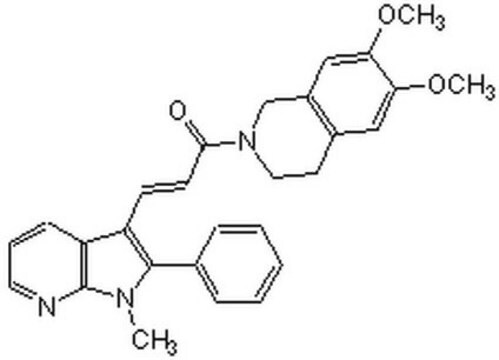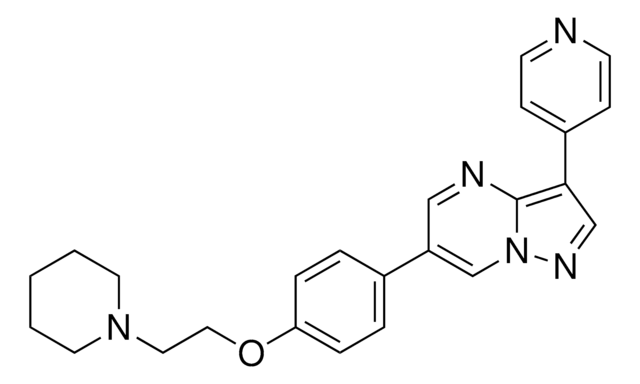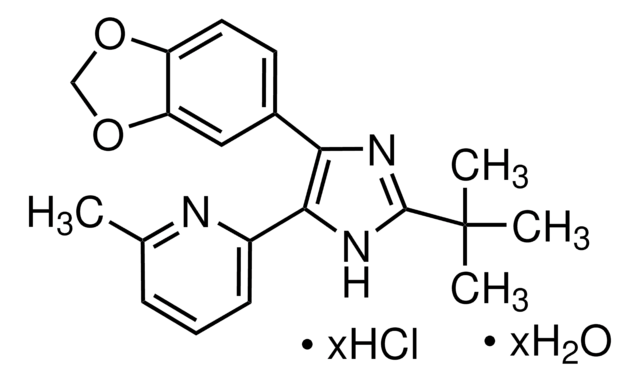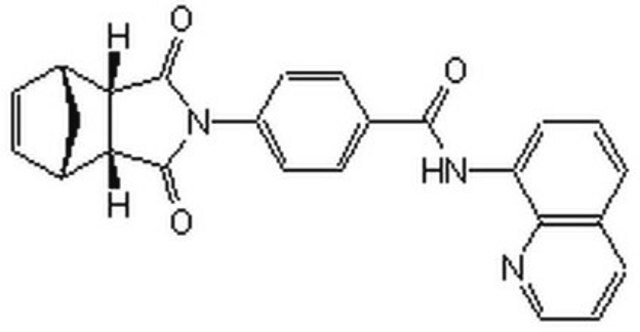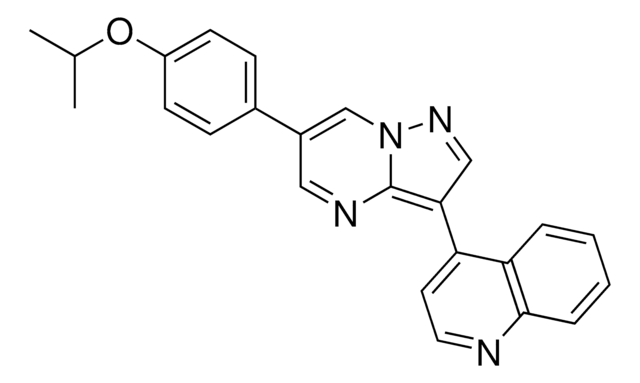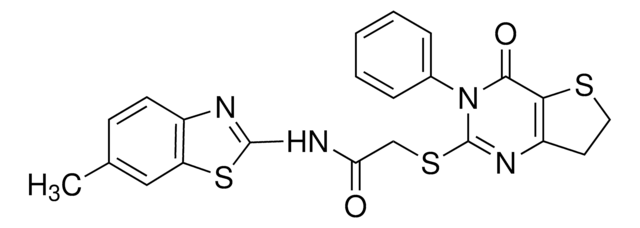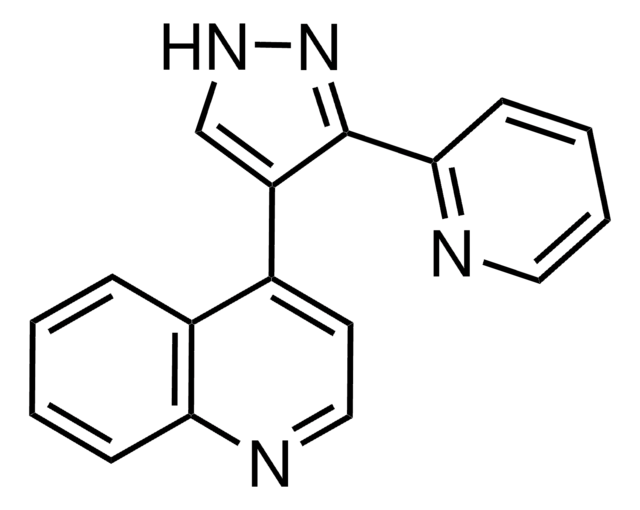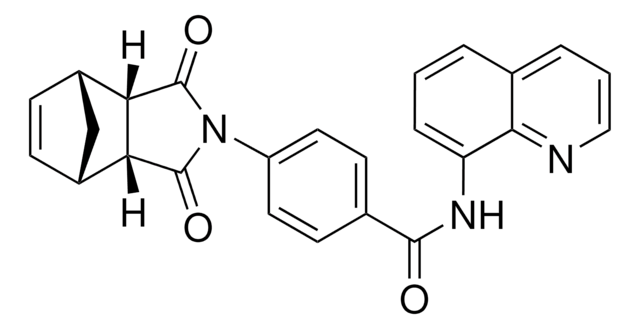616461
TGF-β RI Kinase Inhibitor VI, SB431542
TGF-β RI Kinase Inhibitor VI, SB431542, CAS 301836-41-9, is a cell-permeable inhibitor of SMAD2 phosphorylation. Inhibits the activity of ALK4 and ALK5 (IC₅₀ = 140 nM and 94 nM, respectively).
Synonym(s):
TGF-β RI Kinase Inhibitor VI, SB431542, 4-[4-(3,4-Methylenedioxyphenyl)-5-(2-pyridyl)-1H-imidazol-2-yl]benzamide, Dihydrate, 4-[4-(1,3-Benzodioxol-5-yl)-5-(2-pyridyl)-1H-imidazol-2-yl]benzamide, Dihydrate, SB-431542
About This Item
Recommended Products
Quality Level
assay
≥97% (HPLC)
form
solid
manufacturer/tradename
Calbiochem®
storage condition
OK to freeze
protect from light
color
off-white
solubility
ethanol: 10 mg/mL
DMSO: 100 mg/mL
shipped in
ambient
storage temp.
2-8°C
InChI
1S/C22H16N4O3/c23-21(27)13-4-6-14(7-5-13)22-25-19(20(26-22)16-3-1-2-10-24-16)15-8-9-17-18(11-15)29-12-28-17/h1-11H,12H2,(H2,23,27)(H,25,26)
InChI key
FHYUGAJXYORMHI-UHFFFAOYSA-N
General description
Packaging
Warning
Legal Information
Storage Class
11 - Combustible Solids
wgk_germany
WGK 3
flash_point_f
Not applicable
flash_point_c
Not applicable
Certificates of Analysis (COA)
Search for Certificates of Analysis (COA) by entering the products Lot/Batch Number. Lot and Batch Numbers can be found on a product’s label following the words ‘Lot’ or ‘Batch’.
Already Own This Product?
Find documentation for the products that you have recently purchased in the Document Library.
Customers Also Viewed
Our team of scientists has experience in all areas of research including Life Science, Material Science, Chemical Synthesis, Chromatography, Analytical and many others.
Contact Technical Service
